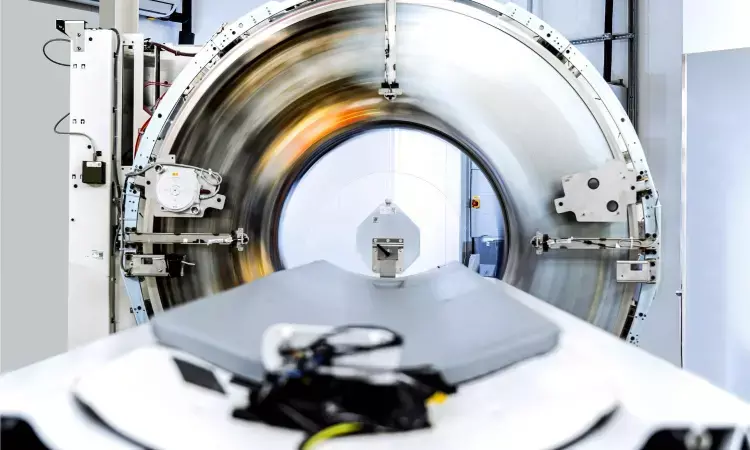- Home
- Medical news & Guidelines
- Anesthesiology
- Cardiology and CTVS
- Critical Care
- Dentistry
- Dermatology
- Diabetes and Endocrinology
- ENT
- Gastroenterology
- Medicine
- Nephrology
- Neurology
- Obstretics-Gynaecology
- Oncology
- Ophthalmology
- Orthopaedics
- Pediatrics-Neonatology
- Psychiatry
- Pulmonology
- Radiology
- Surgery
- Urology
- Laboratory Medicine
- Diet
- Nursing
- Paramedical
- Physiotherapy
- Health news
- Fact Check
- Bone Health Fact Check
- Brain Health Fact Check
- Cancer Related Fact Check
- Child Care Fact Check
- Dental and oral health fact check
- Diabetes and metabolic health fact check
- Diet and Nutrition Fact Check
- Eye and ENT Care Fact Check
- Fitness fact check
- Gut health fact check
- Heart health fact check
- Kidney health fact check
- Medical education fact check
- Men's health fact check
- Respiratory fact check
- Skin and hair care fact check
- Vaccine and Immunization fact check
- Women's health fact check
- AYUSH
- State News
- Andaman and Nicobar Islands
- Andhra Pradesh
- Arunachal Pradesh
- Assam
- Bihar
- Chandigarh
- Chattisgarh
- Dadra and Nagar Haveli
- Daman and Diu
- Delhi
- Goa
- Gujarat
- Haryana
- Himachal Pradesh
- Jammu & Kashmir
- Jharkhand
- Karnataka
- Kerala
- Ladakh
- Lakshadweep
- Madhya Pradesh
- Maharashtra
- Manipur
- Meghalaya
- Mizoram
- Nagaland
- Odisha
- Puducherry
- Punjab
- Rajasthan
- Sikkim
- Tamil Nadu
- Telangana
- Tripura
- Uttar Pradesh
- Uttrakhand
- West Bengal
- Medical Education
- Industry
Photon-counting CT reduces contrast by 25 percent without impacting image quality: Study

Switzerland: A recent study has shown that photon-counting CT (PCCT) lowers the amount of contrast required for CCTA (coronary CT angiography) by 25% with noninferior image quality.
The results, published in Radiology: Cardiothoracic Imaging, further highlight the benefits of photon-counting computed tomography.
The researchers showed that CTA of the aorta was linked with a higher contrast-to-noise ratio (CNR), resulting in a low-volume contrast media protocol offering noninferior image quality versus energy-integrating detector (EID) CT at the same radiation dose.
CCTA is used with contrast to examine the aorta that passes through the abdomen and the chest and is prone to aneurysms. Using iodinated contrast agents in the exam is considered safe, but there are risks, particularly among kidney disease patients.
Many patients undergoing CCTA of the aorta are older, and some may suffer from a certain nephropathy degree; thus, they might be at risk for further kidney function reduction due to the contrast media administration. Also, iodine breakdown can have adverse effects on the planet and contrast agents are subject to supply chain disruptions, reducing the amount and use of CT contrast becomes more significant.
Against the above background, Kai Higashigaito and the research team from Switzerland aimed to evaluate and develop a low-volume contrast media protocol for thoracoabdominal CT angiography (CTA) with photon-counting detector (PCD) CT in a prospective study.
The study included consecutive participants who underwent CTA with a photon-counting detector of the thoracoabdominal aorta and previous CTA with EID CT at equal radiation doses. In PCD CT, virtual monoenergetic images were reconstructed in 5-keV intervals from 40 to 60 keV.
Noninferiority analysis was used to determine the noninferior image quality of the low-volume contrast media protocol with PCD CT. The measurement of image noise, attenuation of the aorta, and the contrast-to-noise ratio were done, and two independent readers rated subjective image quality. The first group used the same contrast media protocol for both scans. CNR gain in PCD CT compared with EID CT served as the second group's reference for contrast media volume reduction.
The authors reported the following findings:
· The study included 100 participants (mean age, 75 years ± 8 [SD]; 83 men). In the first group (n = 40), VMI at 50 keV provided the best trade-off between objective and subjective image quality, achieving 25% higher CNR than EID CT.
· Contrast media volume in the second group (n = 60) was reduced by 25% (52.5 mL).
· Mean differences in CNR and subjective image quality between EID CT and PCD CT at 50 keV were above the predefined boundaries of noninferiority (−0.54 and −0.36, respectively).
"The findings showed that the improved image quality of CCTA with photon-counting detector CT systems can be used to reduce the amount of administered contrast media to the patients without reducing the examination's diagnostic yield," the researchers wrote. "Image quality remained at the same level as previous CT angiography examinations in the same patients using a conventional CT, even though we reduced the contrast media volume."
"CCTA of the aorta with [PCCT] was linked with higher contrast-to-noise ratio, which translated into a low-volume contrast media protocol demonstrating noninferior image quality compared with [conventional] CT at the same radiation dose," they conclude.
Reference:
The study titled "CT Angiography of the Aorta Using Photon-counting Detector CT with Reduced Contrast Media Volume" was published in Radiology: Cardiothoracic Imaging.
DOI: https://doi.org/10.1148/ryct.220140
Dr Kamal Kant Kohli-MBBS, DTCD- a chest specialist with more than 30 years of practice and a flair for writing clinical articles, Dr Kamal Kant Kohli joined Medical Dialogues as a Chief Editor of Medical News. Besides writing articles, as an editor, he proofreads and verifies all the medical content published on Medical Dialogues including those coming from journals, studies,medical conferences,guidelines etc. Email: drkohli@medicaldialogues.in. Contact no. 011-43720751


